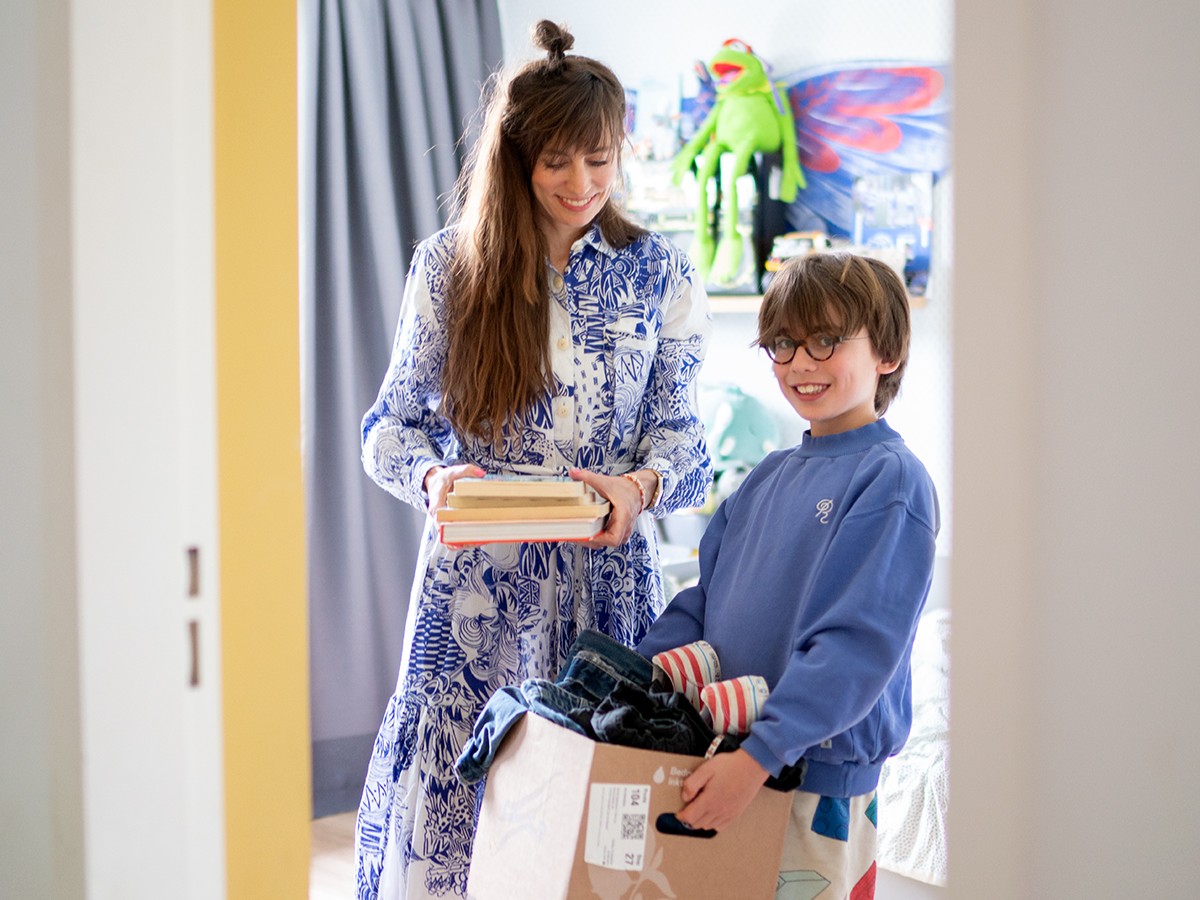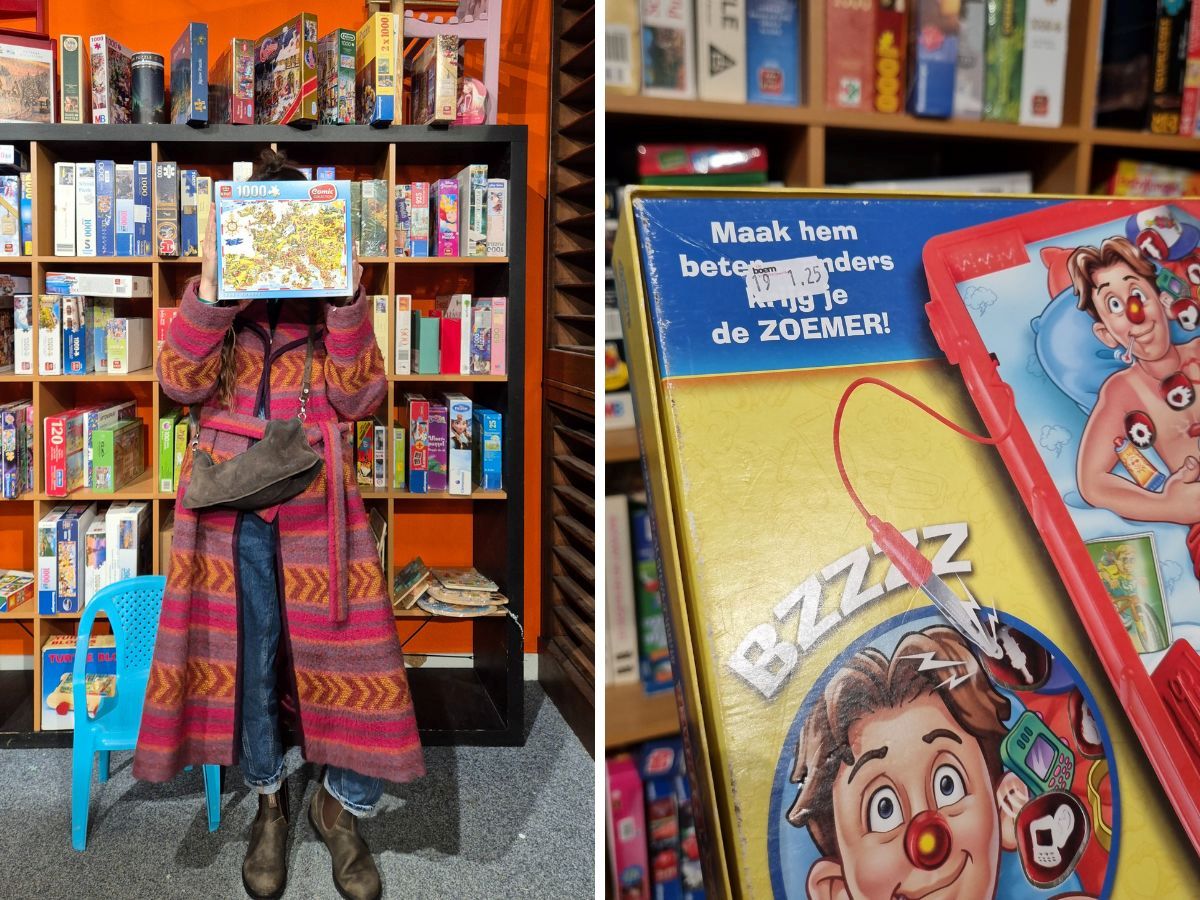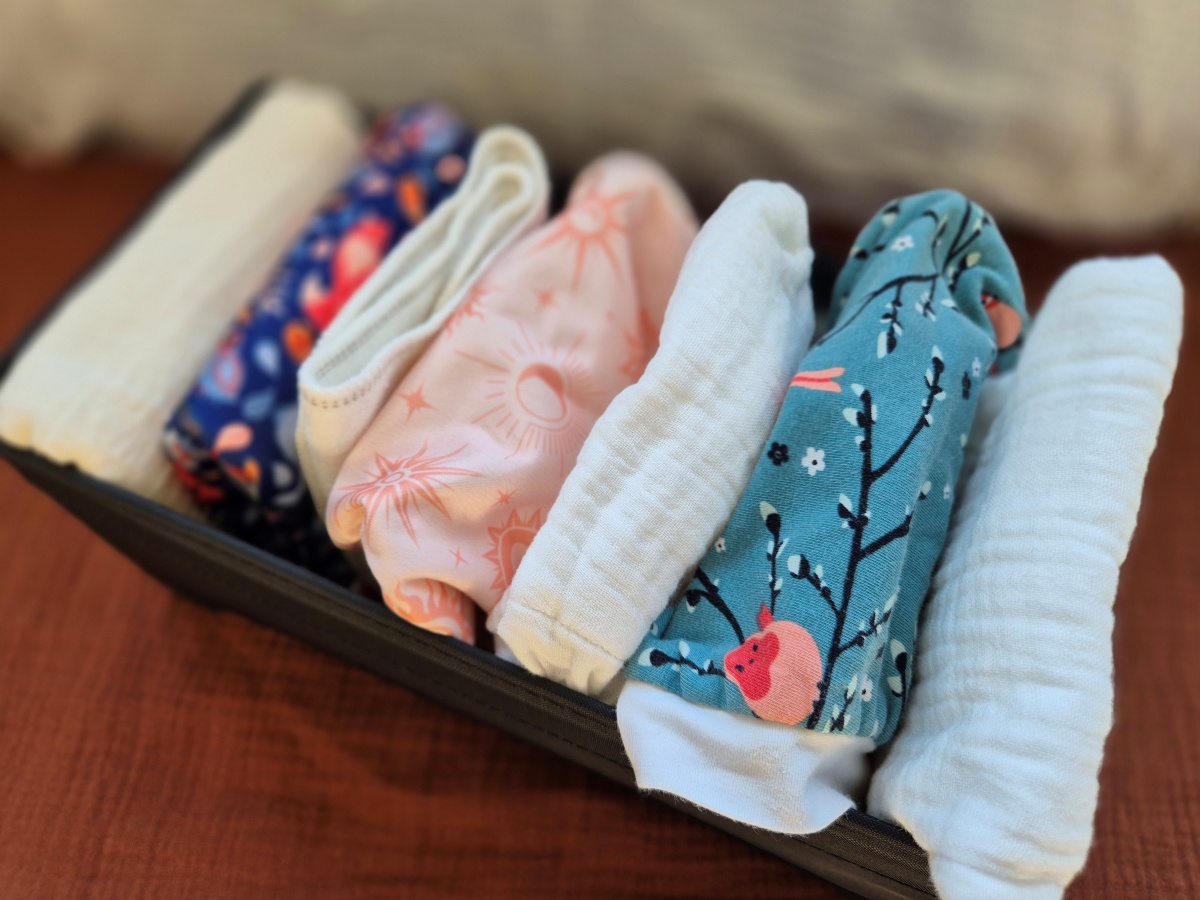An article about poop and pee! Because one of the biggest misconceptions about washable nappies is that they would be dirty or unhygienic. And we would like to clear up that misconception. In this article, we therefore explain step by step how best to wash wash washable nappies. Are you not in nappies, but do you use washable sanitary towels or menstrual underwear? Then this article is also interesting. Proper washing is not only important for hygiene, but it also keeps the nappy - or sanitary towel - longer.
Different types of nappies
If you are just entering the world of washable nappies, it can sometimes feel a bit ‘a lot’. Washable nappies come in all shapes and sizes. There are different systems, fits and materials around. That's where the choice stress starts: which one do you choose? And then you have to start using them and that's where washing comes in. We regret that some parents throw the washable nappy in the ring because they find it too much hassle, when it doesn't have to be much hassle at all. You save money and waste and that washing is not that complicated at all. We'll show you! In This article focuses mainly on the absorbent inner part of the nappy as this part gets dirty the most. We will also briefly discuss the specifics of cloth diaper cover materials, such as PUL and wool, as each material has its own washing instructions. Should you be completely new to the world of washable nappies, it is smart to first read this article on the types of washable nappies. In it, we explain the different systems of washable nappies. There are quite a lot of them - nice pun.
Disclaimer: In this article, we share tips on how best to wash wash washable nappies. These general tips apply to most nappies, but there are thus an awful lot of different types and brands of washable nappies that may require slightly different approaches.
How do you wash the absorbent part of washable nappies?
The absorbent part of the nappy is closest to your baby and therefore also gets the dirtiest. You understand that this part needs the most washing care. By the way, to catch the poo, there are handy inserts, which we previously wrote this article about. But still, that nappy sucks up urine, and that needs to be washed out properly. This is because residual urine can stink, cause skin irritations and damage nappies, making them wear out faster. So get rid of urine.
It is therefore advisable to pre-rinse the nappies thoroughly first. Every washing machine is different, but most machines have a separate rinsing programme. Rinse the nappies for about 15 minutes to half an hour (30°C to 40°C). It is important that this water is pumped off before the main wash starts. For the main wash, choose a 60°C programme that lasts at least two hours. Set the rpm to a maximum of 1200. Do not use an eco programme, as it uses too little water. This may not sound very sustainable, but it is necessary to get the nappies clean properly. Where you can score sustainability points is in drying. Drying on a clothes rack does not use energy, unlike a dryer. It is also better for the fabrics. A fabric will wear out sooner in a dryer anyway. Don't hang the nappies over the heater, as this can damage the elastics (you know... lubbing out). It is also better for the rubber bands to hang the nappies over two lines of clothesline. Look at it this way:



Always pay attention to the washing instructions of the nappy. Washable nappies with elastic bands are best dried over two lines. Right stack of cheerful washable nappies from Nappys.
What detergent do you use for washable nappies?
Opinions are divided on which detergent is best for washable nappies. Yet there are a few key points on which everyone agrees. First, that alternative (natural) detergents such as laundry balls, wax nuts and laundry strips do not get laundry clean enough. The Consumer Association already advises against these kinds of alternative detergents for regular laundry, so for washable nappies they are definitely not a good choice. On the other hand, you also don't want a detergent that is too aggressive, as that can be harmful to both the nappies and your baby's delicate skin. Therefore, avoid optical brighteners, chlorine bleach and fabric softener. Is the absorbent inner part of the nappy pants made of polyester? Then choose a detergent with less than 15% soap, otherwise it might not absorb well at some point. Keeping these points in mind will take you a long way.
Also make sure you dose the detergent properly. Check the packaging of your detergent for this and choose the dosage for heavily soiled laundry. If you use too little detergent, the nappies will not get clean properly. On the other hand, it is not good to use too much detergent either, as it is important that the detergent is rinsed out well and does not build up in the nappies (which can also cause skin irritation). You can easily check if you are using too much detergent by looking at the last rinse of the wash. Do you see any foam? Then you are using too much detergent.
How often should you wash wash washable nappies?
You now know how to get washable nappies clean properly, but there is another important thing to pay attention to: namely, how often you wash the nappies. If you leave dirty nappies for too long, they will start to smell and bacteria and mould can form that you would rather not have in your nappies. Yikes. So don't leave dirty washable nappies for more than two or three days before you wash them. Don't have enough nappies to fill up your washing machine? Then after you pre-wash the nappies, you can add towels, underwear, wipes and other 60-degree washes. Just make sure the machine doesn't get too full; there should be at least a hand width of space left so everything gets clean properly.
Storing dirty washable nappies
Since you don't need to wash wash washable nappies every day, store them in between. You can do this, for example, in a so-called wetbag, nappy bucket or an old bucket with a pillowcase in it. Make sure enough air can get to the nappies. Water and dirty nappies are not a good combination, as this can cause bacteria and mould. You can put washable nappies in a wetbag or (nappy) bucket immediately after use. If you do rinse a nappy once with water, let it dry thoroughly before putting it with the rest of the dirty nappies. Washable nappies should be stored separately.
Washing washable nappies
If you have new washable nappies, you will have to wash them several times before they reach their maximum absorption - the same goes for new towels. You can use the nappy on your child after the first wash, just remember that the nappy cannot absorb that much moisture yet. It can sometimes take up to ten washes before the nappy absorbs optimally. Would you first like to wash the nappies a few times without your child wearing them? Then feel free to wash them with your 30- or 40-degree wash.
How do you wash overpants from washable nappies?
By now you know how to get the absorbent part of washable nappies clean properly. Do you have a two-piece system with a separate cover? Then you don't need to wash it as often as the absorbent part. If there is no poo on it and no smell, you can use a loose PUL or TPU cover for one to two days before you need to wash it. A wool overshirt can even last two to three weeks. Tip: alternate between two overpants, airing one in between each time. Because washing PUL/TPU and wool is so different, we will briefly discuss both. Find out more about the materials washable nappies are made of in this article.
PUL or TPU overpants
Washing PUL or TPU pants is very easy: just wash them with your 40-degree wash. Put them in a laundry bag for extra protection. The only thing to watch out for is that the detergent is not too aggressive. And this can be the case even with ecological detergent. Beware of natural detergent that contains a lot of citric acid (citric acid), linalool or alcohol (anything ending in -ol or -acid). Also prefer not to wash PUL/TPU overpants with bleach.
Occasionally, however, it is advisable to co-wash your PUL or TPU pants at 60°C to kill any bacteria, for example if poo has gotten on them or after your child has been sick. But normally 40°C is fine and even better for the life of your pants. This is because PUL and TPU do not cope well with heat, which can damage the waterproof layer over time. Therefore, avoid the dryer, heating and bright sun as well.
Wool overpants
Woolen pants do not need to be washed as often, but it is important to wash them correctly. Wool does not handle temperature fluctuations well, so wash them by hand in lukewarm water or use the wool programme in the washing machine. You will also need special detergent for wool. Find more information on washing woollen overpants here.
First aid for stains on your washable nappies
Even if you use an insert, sometimes things can go wrong and stain your washable nappy. Most poo stains can be removed by drying the nappy in the sun. But be careful with PUL, TPU or wool covers: they don't withstand the sun very well. Are there still stains in your washable nappy after sunbathing? Then a bar of ox gall soap or green soap will usually do the trick. You can read more about difficult stain removal here. We figured that out for you too!
Washing washable nappies
You now know exactly how to wash wash washable nappies so they last as long as possible and stay nice and clean. If your nappies still smell after washing, something is going wrong, check this article again. If the nappies stink immediately after use, this may have other causes. For example, if your baby is teething, not drinking enough or is sick, the stools may also have an unpleasant smell. In this case, wash your nappies more often and if in doubt, check with your GP or the clinic. Happy washing! And lots of fun with the washable nappies.
More sustainable washing tips from thegreenlist.nl
- For clean laundry, it is important that your washing machine is properly clean. Read our eco-friendly tips to get your washing machine sparkling clean here.
- More tips to wash your (normal) laundry more sustainably: read all about sustainable washing machines and detergent here.
- For when you don't feel like washing for a while: tips for keeping clothes clean without washing.
Sources: Nappys.nl, Butt boutique, Kaatje Katoen, Waschbare Welt, Windelmanufaktur. Photo credits: Kirsten Schoner & Nappys.






